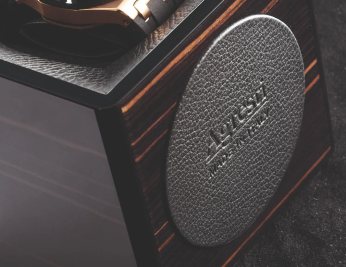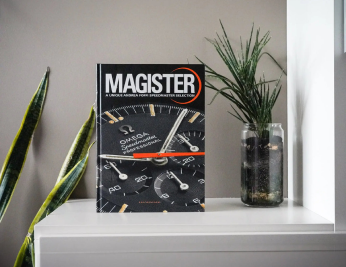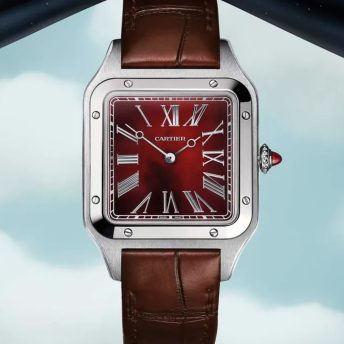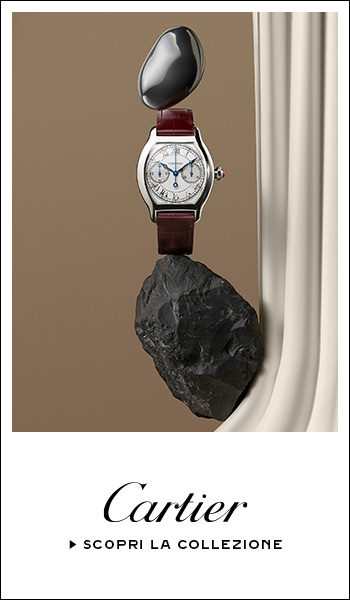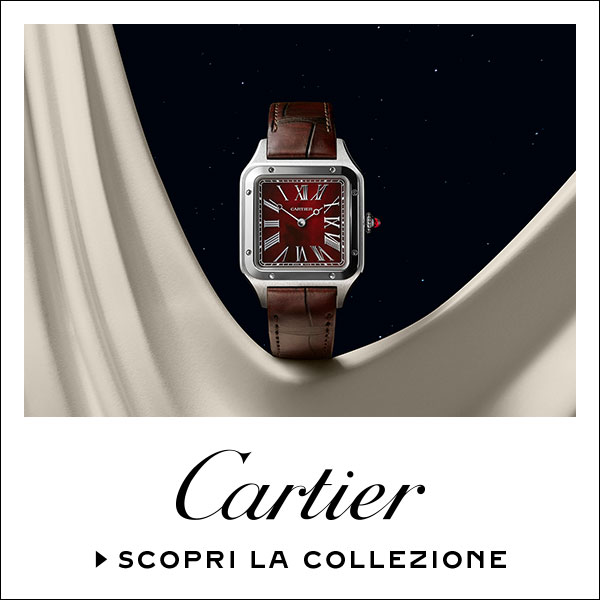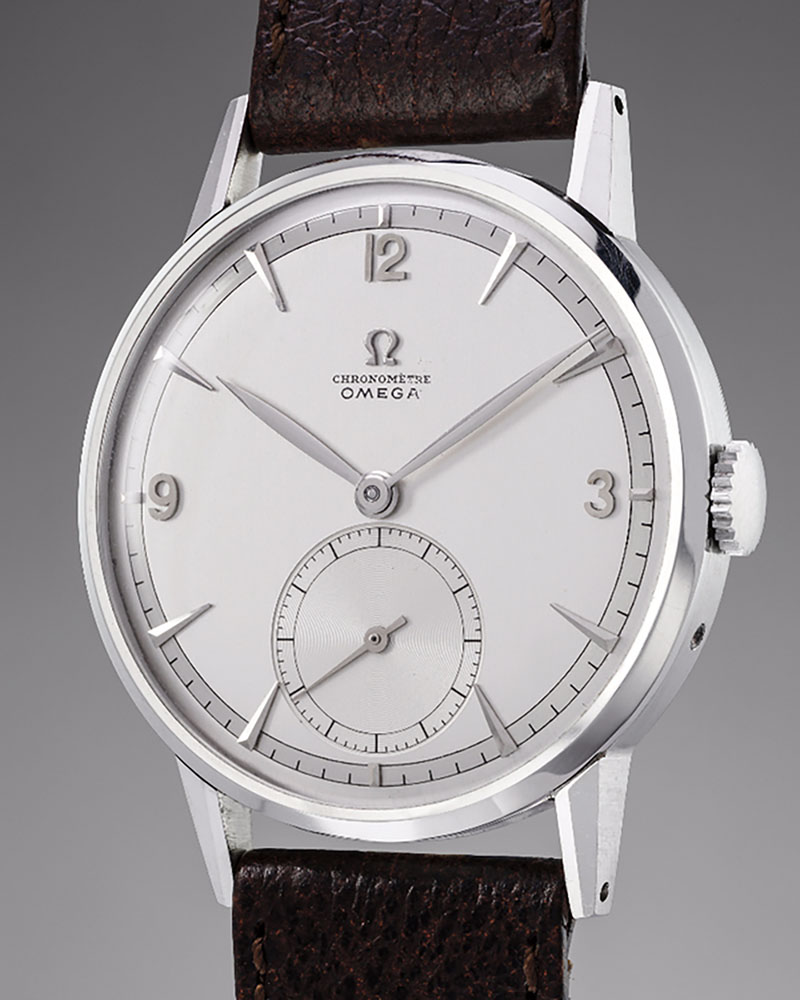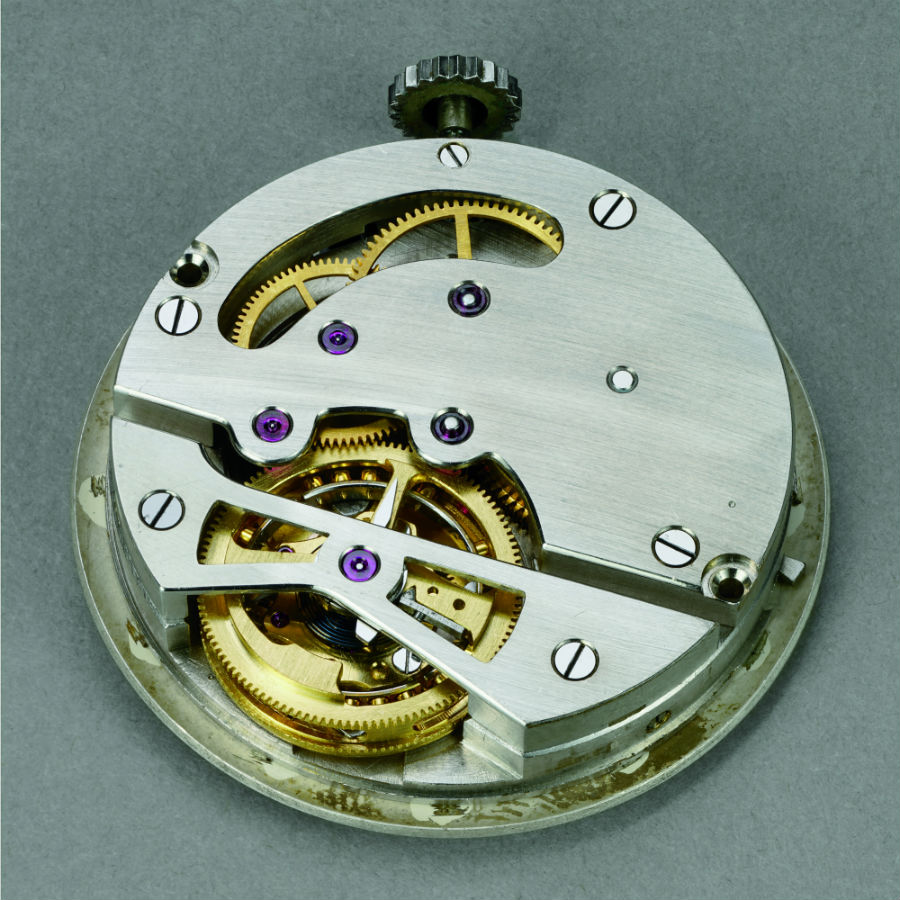Precision, a maniacal pursuit that we discussed in several articles. Yet, as early as 1801, one of the founding fathers of watchmaking, Abraham-Louis Breguet, was working to achieve this goal.
What kept him away from his goal was the gravity of the Earth, a phenomenon that causes alterations in timepieces’ proper functioning.
With the 1801, Monsieur Breguet puts an end to this headache, inventing the tourbillon escapement.
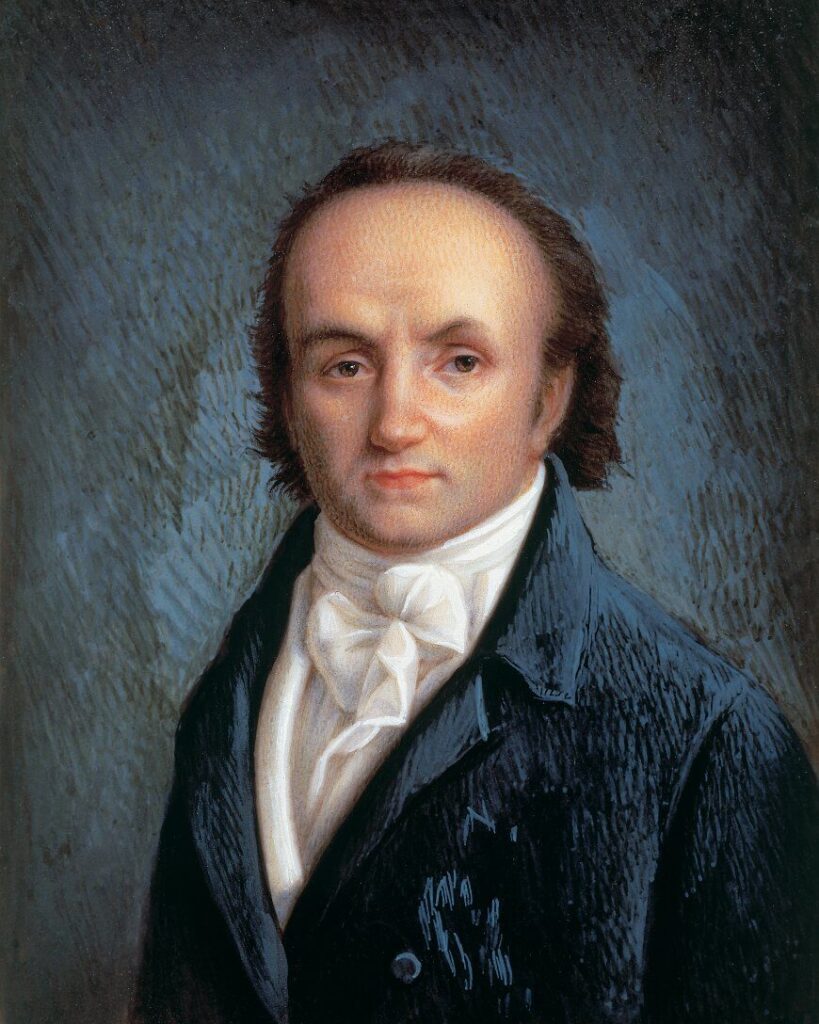
What’s an escapement?
Every watch needs an escapement to work. The latter is the mechanism that releases the power stored in the spring barrel in a rhythmic way.
(In the picture, a lever escapement that is still typically used in pendulum clocks)

When we wear an automatic watch (or hand wind a manual) we are tightening a spring. The energy stored by this is the same one that allows to make a timepiece work properly.
But back to the escapement: you surely heard about it as the “beating heart” of the watch. Why beating?! Because it “beats with a rhythm“, that is its fundamental characteristic.
If there were no such cadence, the energy would be released all at one time and it would be almost useless. With its oscillation frequency instead, the balance spring (a fundamental part of the most widespread escapement, the anchor escapement) allows you to beat the time, so that you can then mark seconds, minutes, hours and so on…
What’s different in a tourbillon?
Let’s take the most widespread escapement, the anchor. Although the balance spring swings (around a pin called axis), the structure is fixed and only some parts make small repetitive movements.
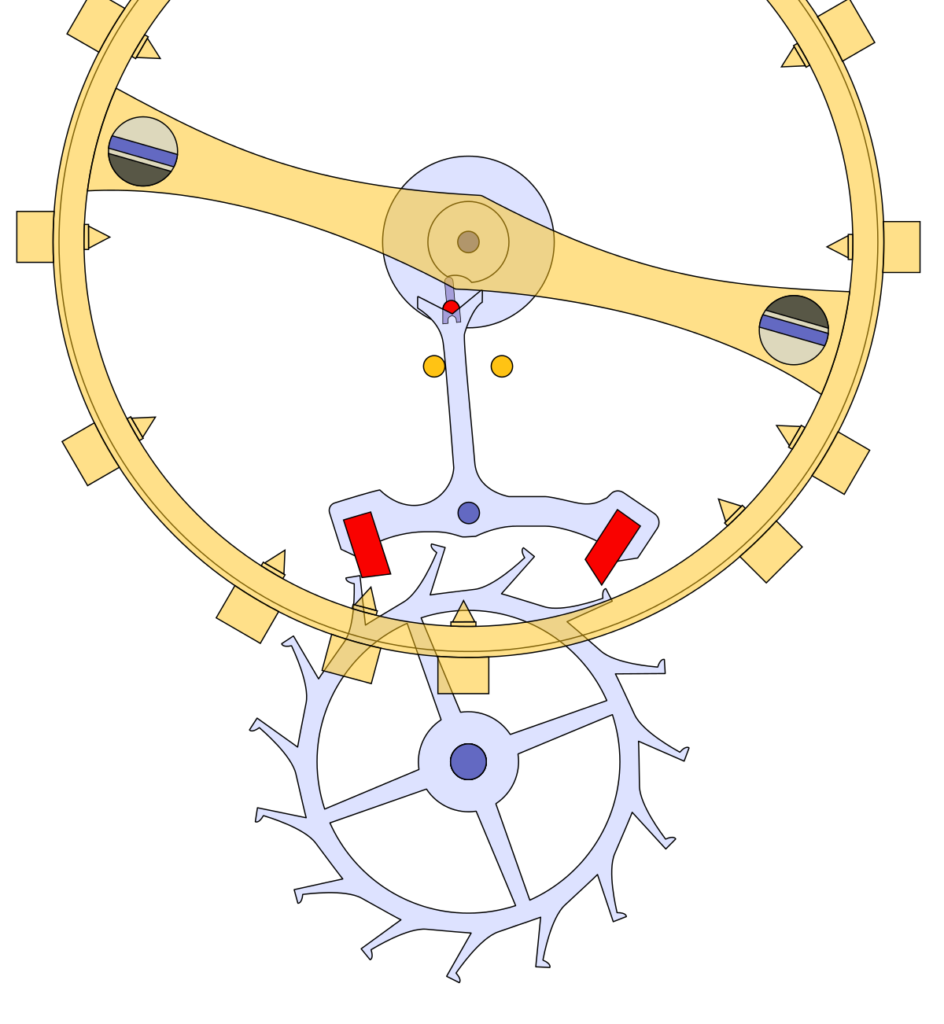
This is no longer worth it in the tourbillon. Gravity is contrasted by a rotating structure, whose rotation counteracts the changes caused by the Earth’s phenomenon. It’s easy to think that a moving object is more difficult to disrupt than a steady one, as the variations will, in the long run, balance.
The mechanism consists of a rotating cage – in which the balance wheel is mounted – pinions and parts of the previously seen mechanism. We could therefore say that it is a variation, “an upgrade”, of the aforementioned anchor escapement.
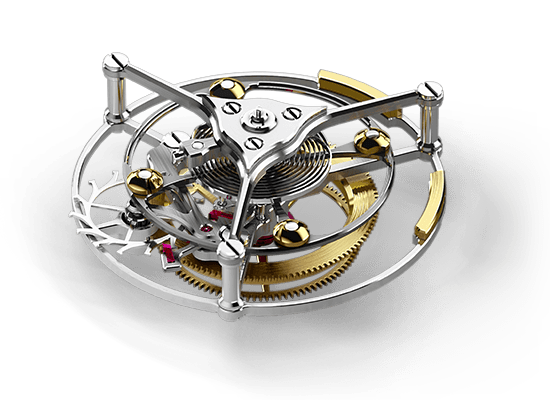
Although we won’t go too much into detail to avoid exaggerated technical complexities, let’s see a little curiosity together.
The first wrist tourbillon was branded Omega
Just one year has passed since this very classic time-only appeared at Phillips. Behind the austere and minimalist aesthetic, however, lies a great movement and a great novelty.
Produced in 1947 with the 30 I caliber, this prototype is most likely the first industrially produced wrist tourbillon. Inside a 37.5mm steel case, a heart only 30mm wide beats, witnessing Omega’s research and development at the time.
Record-breaking year of birth, size of the movement but also record-breaking price… 1.428.500 CHF(1.310.670€)
This model, with its classic appearance, marks the beginning of a trend recognized by all, that of wanting a tourbillon on the wrist.
The biggest wrist tourbillon
This record, for the largest tourbillon (mounted on a wristwatch), is held by the Armenian brand Kerbedanz.
The model is the Maximus, with 49mm case and 27mm flying tourbillon cage, 7mm larger than the previous record holder.
Pictured below you can see it on our wrist in the rose gold version, which features the KRB-08 caliber, consisting of 415 parts (73 are just for tourbillon!), some in titanium. It is precisely this last material, used in the escapement, that makes it fully functional, thanks to its very low weight.
In this movement the tourbillon performs a rotation every 6 minutes and is placed in the center, so as to make it the protagonist.
Although it is very generous in diameter, it’s really a sight to be admired on the wrist: rarely on other watches you can see so well the operation of the tourbillon.

All types of tourbillon
Classic tourbillon
Explained just above, it’s the first one that is born. Invented by A.L. Breguet, it remains a trademark of the brand.
In the photo you can see a creation of the master itself.
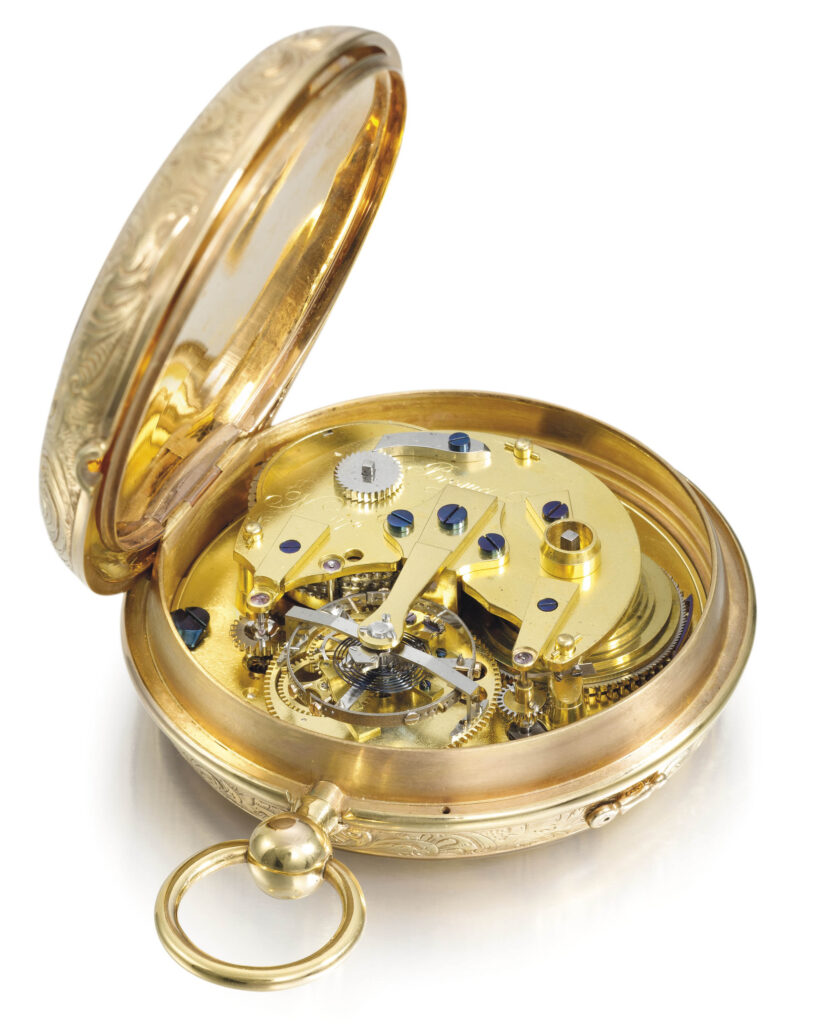
Tilted tourbillon
It has the same structure as the classic tourbillon but its rotation is made with an inclination respect to the ground, to reach a higher number of positions and compensate for gravity even better.
One example is the Greubel Forsey GMT Earth Limited Edition White Gold, a very special timepiece.
Another famous example comes to us from Francois-Paul Journe with his Tourbillon Souverain Vertical, in which the inclination is exactly perpendicular to the ground, as explained in our previous article.
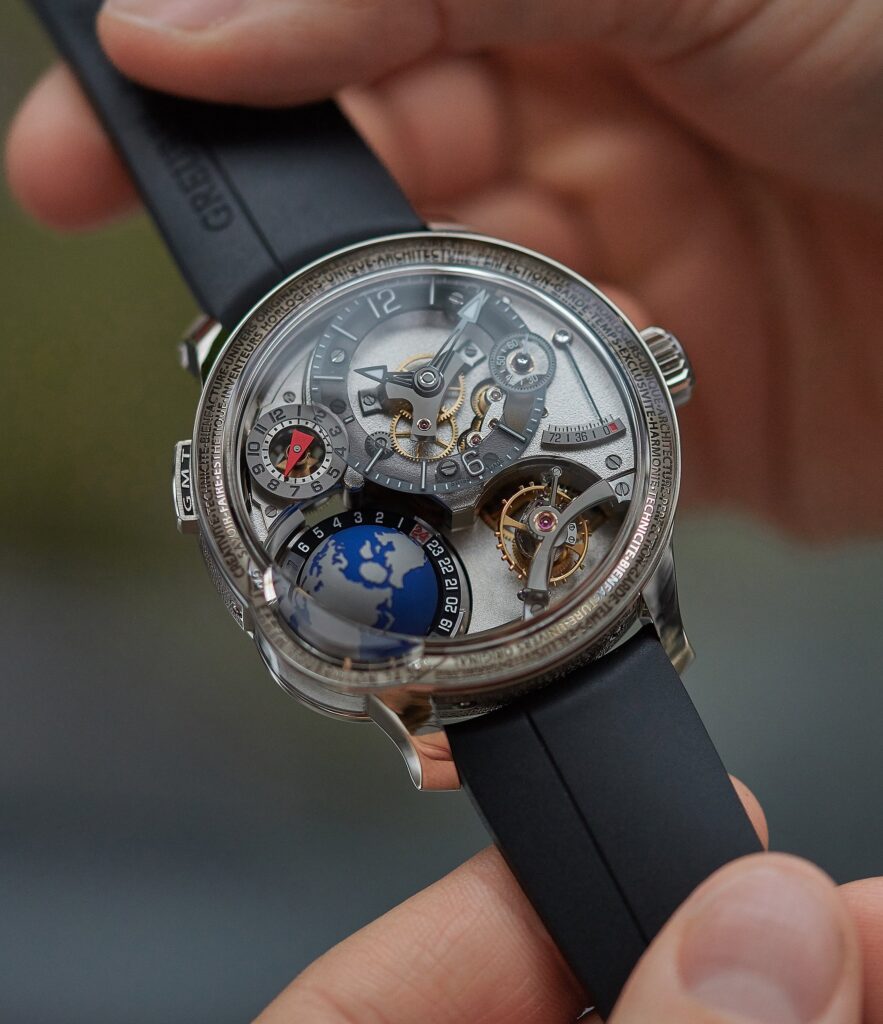
Credits: A Collected Man 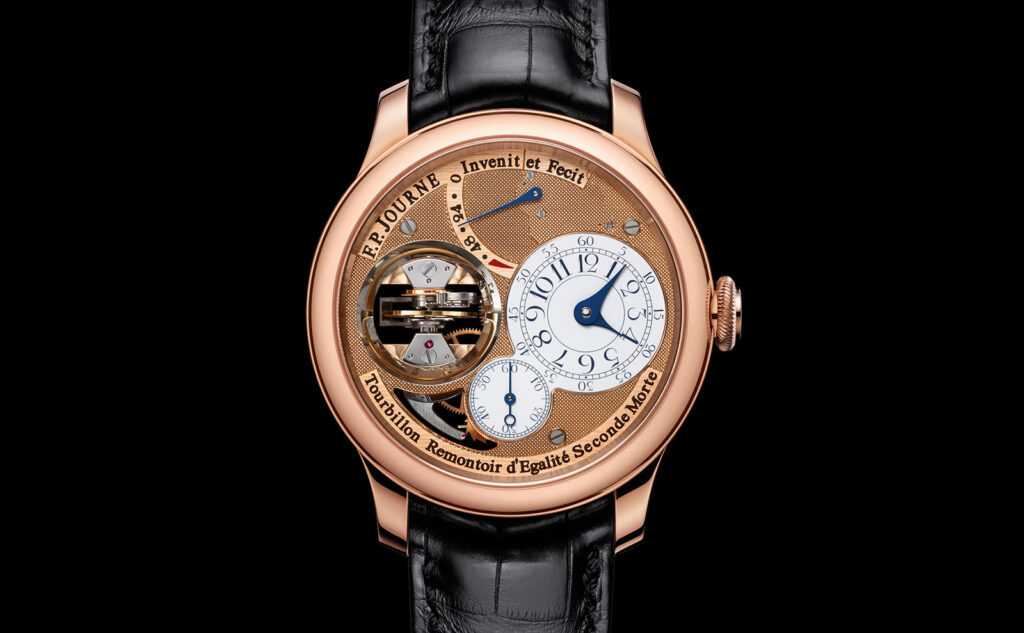
Flying tourbillon
A good thing can always be done better.
To this logic, watchmakers responded by inventing the flying tourbillon, in which the overall mechanism is fixed only on one side to the movement, instead of two bridges. This approach, dating to 1920, aims above all to improve the aesthetics of the complication, going to expose the tourbillon more, making it more visible
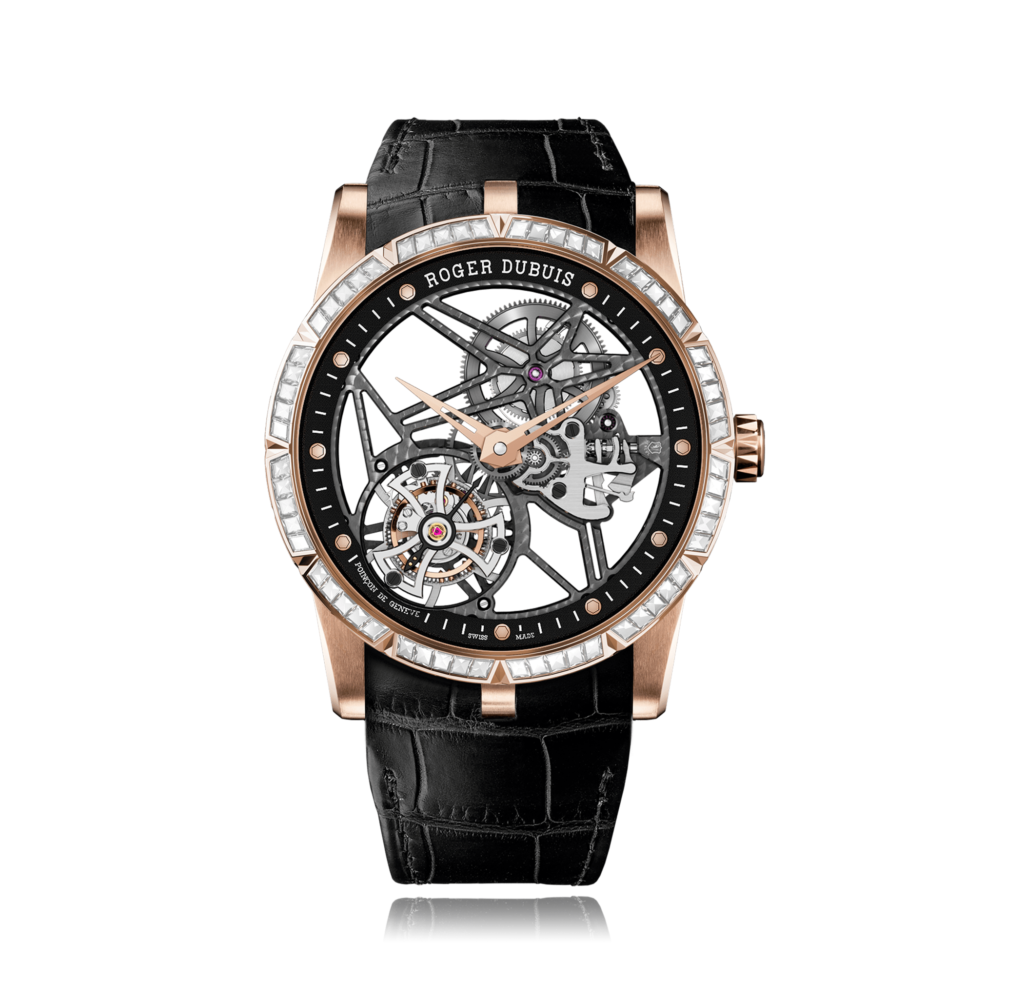
Mystery tourbillon
Take a flying tourbillon. Take a “mystery watch”. If you are not already imagining it, the result is in the picture, and it is sublime.
What happens, in practice, is that the tourbillon is fixed to the movement by a system that incorporates the crystals in which it is embedded, in order to make it floating and seemingly without any connection to the gears. Surprising, right?
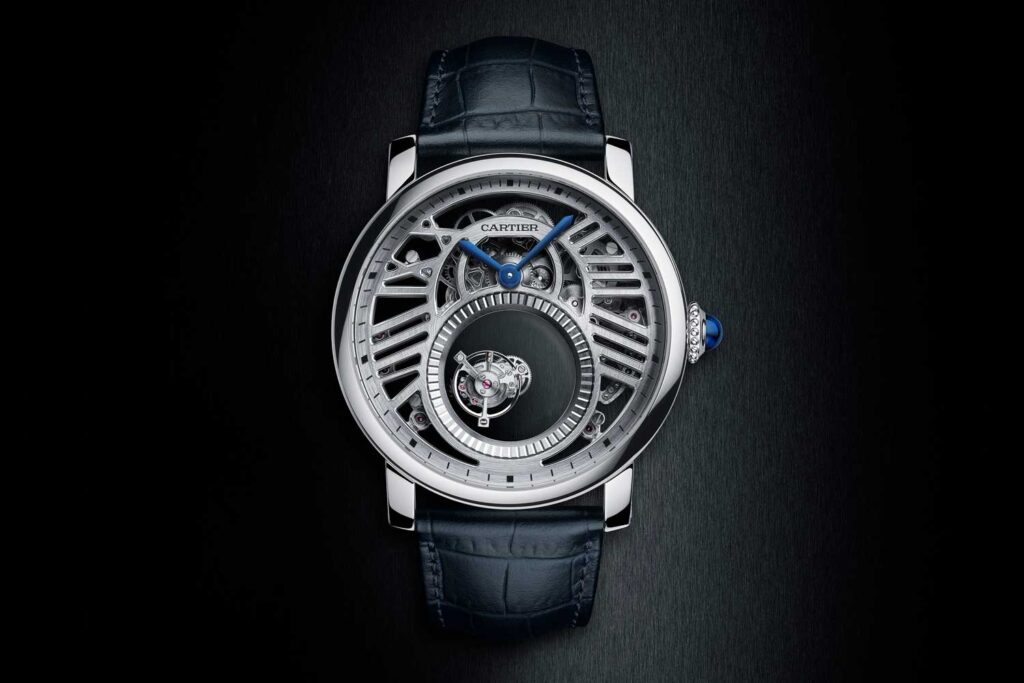
Multi-axes tourbillon
Wonderful to look at, it’s a true masterpiece of engineering and aesthetics.
The multi-axes tourbillon obviously comes with the idea of constantly changing angles, so as to compensate for any kind of force, in every direction.
Speciality, to date, of Jacob&Co has also been manufactured by Jaeger-LeCoultre in pieces like the Reverso Gyrotourbillon, of which we talk about in our article.
Its biggest flaw lies in size, which do not allow you to find this complication on ultra-flat watches, but it is also a fortune.
For this same reason, the large size often allows you to keep the tourbillon in sight, so you can admire the full rotation.
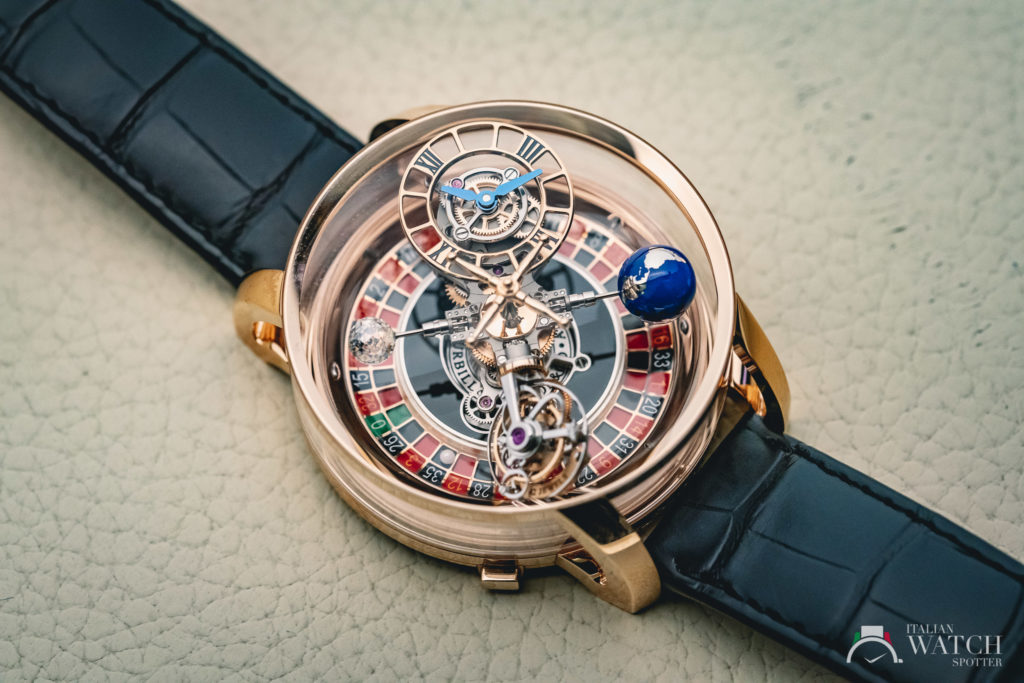
Multiple tourbillon
What happens if we match 2 or more tourbillons in a single watch? According to some authoritative watchmakers, we are greatly improving the accuracy of the timepiece…
Although this is a controversial position, and not shared by all, our recent article on resonance leads us to advocate for the correctness, at least theoretical, of this theory.
By flanking different escapements in the same movement we can in fact take advantage from some physical phenomena, going to increase the accuracy of the timepiece. This is the case of the Jacob & Co. Twin Turbo Furious Bugatti.
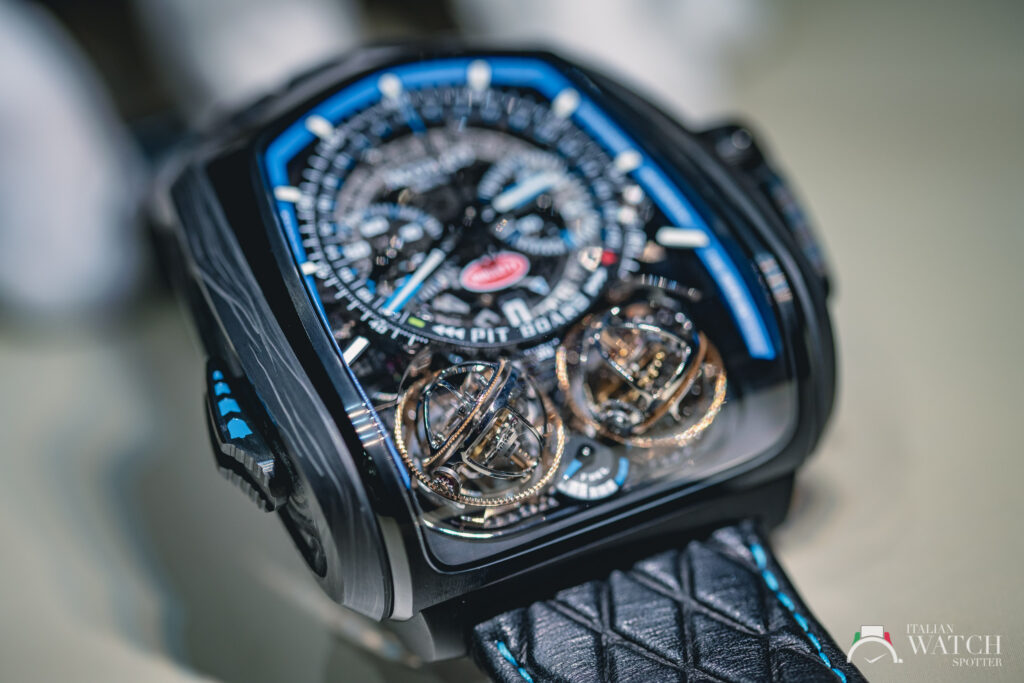
Another solution is found by Antoine Preziuso, who showed us his Tourbillon des Tourbillons in Basel, featuring three escapements, placed at the edges of an equilateral triangle, rotating together facing the center.
Beside of the truthfulness of a greater precision in multiple tourbillons, on which we let debate who designs them, we could just talk about the beauty and mechanical complexity, which already have a lot to say…
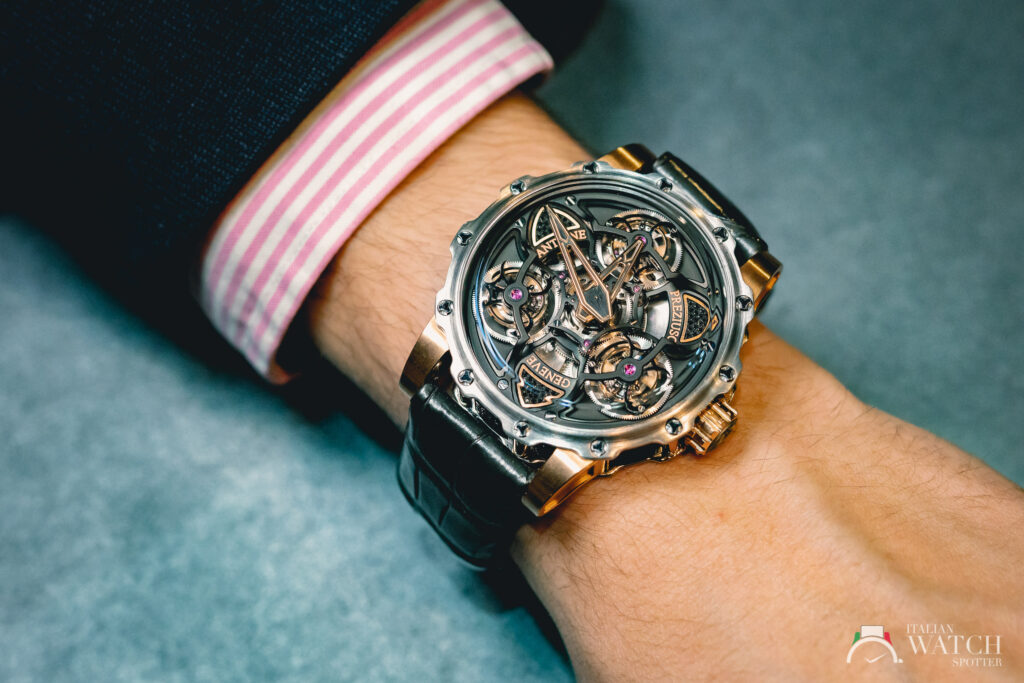
Tourbillon chronograph
Do you remember the news from Zenith 2019? If you don’t remember them properly, here’s our article about them!
Why are we interested? Because Zenith introduced to its collection the Defy El Primero Double Tourbillon, an incredible watch, featuring 2 tourbillons, one for hours and minutes, the other for the chronograph.
The one with a frequency of 50 Hz is the world’s fastest, allowing the chronograph to measure up to hundredth of a second.
It’s not everyday to see a tourbillon spinning that fast, but we can assure you it’s very adrenalinic.
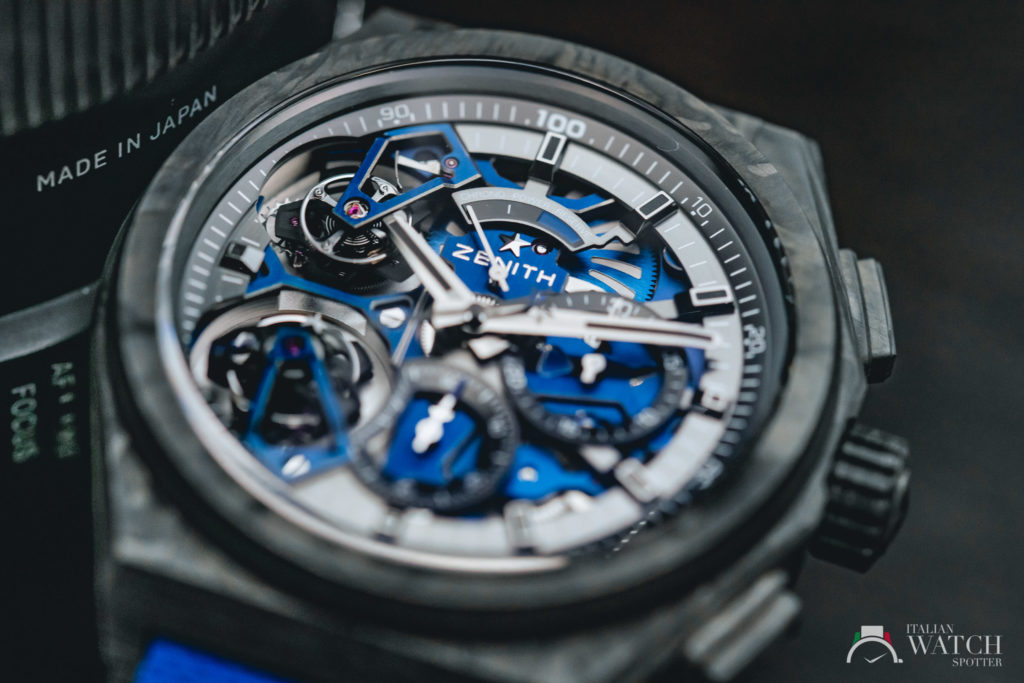
Open worked or not?
Because of its great sophistication and love received by collectors, tourbillons are often in plain sight even from the dial side. This doesn’t surprise us: if we think about it, we have just seen that this is the reason that gives rise to variants such as the flying tourbillon.
Beside of aesthetic taste, the choice on whether or not to keep the tourbillon in sight also has mechanical reasons.
Sunlight, in fact, could cause malfunctions to this mechanism that should solve them, thwarting the intentions of Abraham-Louis Breguet, and also ours.
It is no coincidence that Patek Philippe, is known for keeping its tourbillons “hidden”. And as Patek, the first Omega we saw above, has its tourbillon completely enclosed by case and dial.
Although it is often pleasant to admire the operation of this complication, even keeping it hidden has its great charm, and it is a nice surprise when you look at the watch more closely.
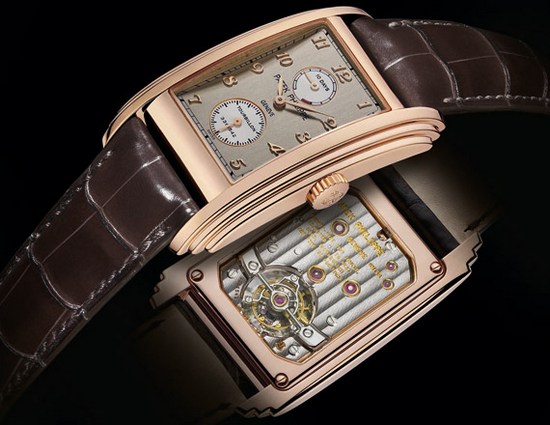
Once the 1800s came to an end, the Earth’s gravity has very little impact, especially on wristwatches, which are in constant motion by definition.
A complication of this caliber, however, cannot disappear and deserves to transmit emotions to the owner, in addition to some evolution, even just to demonstrate the skill of the watchmaker. Every high-end watch brand (Rolex aside…) boasts in fact in the collection or in history at least one wristwatch with a tourbillon, which reaches high-end quotes thanks to this complication.
Although the answer from China is a tourbillon for a few hundred euros, this complication is now in the DNA of the watch collector, who was born with the notion of “tourbillon=beautiful” in his mind and who considers it a kind of Holy Grail of his own passion, so much that it is sought in all shapes and sizes. And we, too, can’t blame him…
Photographs (with logo) by Vincenzo Finizola (@vfphotograf) for ItalianWatchSpotter
Translated by Lorenzo Spolaor (@lorenzospolaor)

